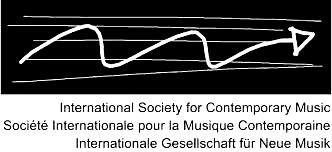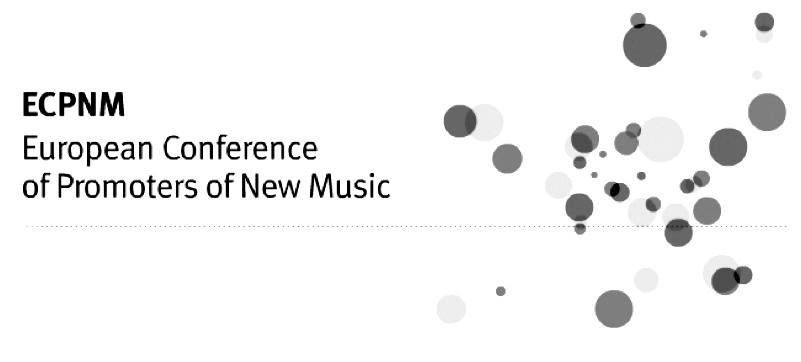| SAMSTAG - 14 Mai 2016 -
21h30 - Schloss Leuk - PART 2
ARS ELECTRONICA FORUM WALLIS CALL FOR ACOUSMATIC STEREO WORKS 2016 Swiss Contemporary
Music Festival Forum Wallis
PROGRAM PART 2 Nicholas Chase James Andean Orestis Karamanlis Manfredi Clemente Emilie Payeur Christoffer Schunk Mirjana Nardelli Yasuhiro Otani Mikel Chamizo Jannik Giger Peter Streiff Charles Halka Alain Michon Phil Taylor
PROGRAM AS PDF
Mikel Chamizo (ESP) Nieve (snow) is inspired by the falling of the snowflakes and its infinite atomization, which nevertheless built a phenomenon of continuity, sometimes of deep calm and sometimes of angry chaos. Nieve tries to recreate the complexity of spatial reference points of the snow, using electronics that has been synthesized looking for an instrumental imperfection, with detunings, blows and scrapings, to communicate the melancholy that comes with a snowy winter. Out of the bosom of the Air
Yasuhiro Otani (JP) Duration; 13:48. This music has be designed for an electro magnetic guitar. This would be interpreted in almost two ways for designing this compostion. One is the developping method for making extend harmonic. The other is your ear of delicate sensibilities. Thank you for your listening. In the trembling grey of a spring dawn, when the birds were whispering in mysterious cadence among the trees, have you not felt that they were talking to their mates about the flowers? Those who cannot feel the littleness of great things in themselves are apt to overlook the greatness of little things in others. Yasuhiro Otani, Composer, Guitarist. Awards and distinctions:
2016 NYCEMF 2016 Reverie for Electric Guitar - 2013 ICMC 2013, gU-topia
for guitar 8channel Spatialized - 2012 CINESONIKA - 2012 : selection,
The Difference Machine - 2011 Re-new 2011 : selection, VAMP (Visual
and guitar)
Phil Taylor (UK) Pathways is a complex blend of random drumming and arpeggiated patterns suggested by an idea of communication in neural pathways, which I had as a result of researching Parkinson’s disease. The piece is a world premiere. A UK composer in many genres, Phil Taylor's electronic ambient works are released on iTunes, recent compositions have been performed by the Nautilus Brass Quintet, Courtney Sherman, CoMA Leeds, LivingVoid Project, H2 Saxophone Quartet, Artdesamis Piano Trio, Walking Wiltshire White Horses Project, Livas Clarinet Quartet, and Dr Liana Valente. Larger scale compositions have been workshopped by the Maggini Quartet, Emily Howard, Sally Beamish and Michael Finnissy. Phil is winner of the 2015 YLSS New Music Competition. Phil plays clarinet, saxophones, violin, viola, cello, double bass and piano and has played with the Northern Wagner Orchestra, CoMA Leeds, Leeds Haydn Players, the Halifax Symphony Orchestra and chamber groups in the Leeds area.
Emilie
Payeur (CAN) « Fumes » is the fifth track of my upcoming album « Deadline ». This is a very intense track that must be listened to very loudly in order to cause an intentional distorsion. It slowly starts with extremely high pure tones that are almost inaudible. Then the sounds gradually fill the space, reminding fumes that would slowly fill a room. By the end, the space is entirely filled-up by sounds, leaving the listener hypnotized. Emilie Payeur’s practice attempts to explore sound art in all its forms, and at times also encompasses both performance and visual arts aspects. Although abstraction was initially at the core of her work, she has since moved on to explore other concepts; more recently the notion of danger as been at the center of her interests, all the while searching for a renewed and innovative way of presenting experimental music, akin perhaps to a certain form of theatricality. Since 2009, her works have frequently been showcased at home and abroad and have received numerous awards and recognition internationally.
Mirjana Nardelli (IT) "There is nothing left to fear" is an electroacoustic piece for fixed media and piano inspired by a moment of transition. How to handle our fears? Fear is normal, it gives you courage. The architecture of the piece is simple, there is a contraposition between stasis and verticalizations. The electronics music represents the sound of the Earth, while the piano acts as the man. He is alone and he tries to find his own true spirit. Overcoming our worries and uncertainties, we look toward our tomorrow. Mirjana Nardelli was born in 1992. She’s an Italian electroacoustic composer and performer. In 2012 enters Conservatorio Statale di Musica O. Respighi di Latina, Electronic Music. In 2013 enters e-cor ensemble as a founding member. The ensemble's main priority is electroacoustic improvisation, which includes conductions and live electronics, up to radical improvisation with the only use of the laptop. Her music aesthetic is influenced by acousmatic, cinematic, theatre and literary arts. She followed master classes and seminars held by Denis Dufour, Giancarlo Schiaffini, Walter Prati, Keiko Harada, Alvin Curran, Roberto Bellatalla, Edison Studio. She collaborates with: Roberto Bellatalla, Simone Pappalardo, Elio Martusciello, Gianni Trovalusci.
Nicholas Chase (USA) In 2008, I created a 32-minute musical loop from filter modulated radio white noise with Neighborhood Public Radio at the Whitney Biennial: hai•ku was born. Inspired by African rhythms, hai•ku is "post-human funkadelica." Generated from white-noise instruments and noise samples made in my studio, each cut on hai•ku is an improvised mashup of pattern grids in 7, 12, 9, 5, 3, 15 and occasionally 4, with the underpinning pulse of each 'song' alternating between 5, 7, and back to 5 - like the lines of a haiku poem. Nicholas Chase’s music has been hailed by Strad Magazine as ‘brilliant,’ Los Angeles Times as ‘flamboyant,’ and ‘brawling...Rite of Spring meets Metallica,’ and dubbing him ‘Eye/Ear Explorer,’ LA Weekly writes of his short opera 22, ‘the human brain at its most imaginative.’ Chase studied composition with Morton Subotnick, Bunita Marcus, Stephen L. Mosko and Mary-Jane Leach. His musical escapades typically integrate electronic sounds with traditional acoustic instrumentation and have been commissioned by a list of notables including Long Beach Opera, New Zealand's 175 East, the Philadelphia Classical Symphony, California E.A.R Unit, and luminary soloists internationally. Headlining festivals in Europe and the US as composer, performer and improviser, Chase is known for integrating kinetic visuals with strong musical statements. His composition “NOVA: Transmission” for FM radio and closed-circuit TV was exhibited as part of the 2008 Whitney Biennial, and his 32-minute piano/video ballad “Songs of the Thirsty Sword” opened the New Music+ Festival at the Janacek Academy in the Czech Republic. Chase was an inaugural Composer Fellow at the 2011 Other Minds Festival and nominated among only 20 US composers for the prestigious American Academy Berlin Prize in 2014. In 2015 he was conferred an honor for Excellence in Musical Composition from the International Center for Japanese Culture in Tokyo. Spring 2016 brings the CD release of his hour-long opus for violin and electronic fields Bhajan on Cold Blue Music (LA), as well as premieres of new chamber works in Boston, New York and Los Angeles.
Christoffer Schunk (USA) Until No Longer Effective is a multi-sectional piece utilizing sine tones, field recordings, recorded instruments and voice, a few recordings of horse farts, and countless recordings of human farts (collected over the last 2 years). In it’s entirety, the piece will be 10 sections. As of now, the first 6 sections have been completed and you will hear section 1 in this European premiere. The title of the piece relates to the conceptual inquiry of the entire work. It deals with humor in analytical and interrogatory ways. After listening to farts for a certain period of time, what happens to the listeners’ reactions to them? If one initially laughs, his or her attitude may soon be that of annoyance, then curiosity, and then something else altogether. How long does desensitization take and how do surrounding sounds influence reaction to something as specific as farts? As someone who’s artistic focus is on human individuality, farts have become important on how I view the world. Every flatulation is unique and expressive. They are themselves. Their sounds can rarely be predicted. Each one is a surprise, a delight, and universally understood. Christoffer Schunk is a multidisciplinary composer and performance artist based in Los Angeles. His works involve voice, common and uncommon instruments, field recordings, electronics, and acting, often combining multiple media. He utilizes experimental performance practices and draws musicality from human interaction. Much of Schunk’s work vacillates between audio and theater, resulting in intricately staged productions. His pieces have premiered at SEAMUS, the Iron Composer Competition, REDCAT, Human Resources LA, and the wulf, and have been performed by Conceptual Soundproductions Budapest, the New Century Players, Santa Clarita Master Chorale, The Black House Collective, Ensemble for Contemporary Music, and the UC Santa Barbara Symphony Orchestra. He received and MFA from California Institute of the Arts under composers Anne LeBaron and Michael Pisaro.
Manfredi Clemente (IT) It is a space made up of spaces and of their relationships and contradictions. It is the research of other dimensions of a composite reality that can be nothing but far, that can be nothing but vanishing. Les dimensions du réel is a work in two volumes and an interlude, composed in 2014 between the Birmingham Electroacoustic Studios and composer’s own studio in Palermo. The work was awarded the special jury prize of Di_Stanze – Community Festival of Sound Art 2014. Manfredi Clemente (Palermo, 1988) is a composer of musique concrète, field recordist and electroacoustic improviser based in Birmingham, UK, where he is pursuing a PhD in electroacoustic composition under supervision of Jonty Harrison. His research investigates space not just as a mere parameter of the compositional process, but as main dimension of perception and then of evocative processes involved in listening experience. Clemente discovered the acousmatic repertoire thanks to the meeting with Lucio Garau, his former secondary piano teacher at the Conservatoire of Palermo. Interpretation of fixed-on-a-medium music on acousmonia is central in his musical practice. As a consequence of this he developed a piece of software, STRATI, in collaboration with Lucio Garau, that allows a totally free distribution of sound in space, reducing at the same time the gestural presence of the performer. He has been curating the installation and performances of the Contemporary Music Festival of Cagliari acousmonium for several years. Clemente has composed music for theatre, performances and installations. As a live electronics performer, he has been part of the MiniM Ensemble and of the Klein Bottle collective. His improvisation solo is based on a mix of electroacoustic feedback machines and field recordings. He is an active member of B.E.A.S.T. – Birmingham ElectroAcoustic Sound Theatre and he has performed or his works have been performed in Italy, United Kingdom, France, Czech Republic, Slovakia, Japan, Sweden and Greece.
Charles Halka (USA) Charles Halka’s music has been performed in North America, Europe, and Hong Kong, including past and upcoming performances by the Cabrillo Festival Orchestra conducted by Marin Alsop, the Lviv Philharmonic, the Mexican National Symphony, counter)induction (USA), Fort Worth Opera Studio (USA), Volti (USA), and the Callithumpian Consort (USA), and at such venues as the ISCM World Music Days (Belgium, 2012), Palacio de Bellas Artes (Mexico), and the Coolidge Auditorium of the U.S. Library of Congress. As a Fulbright grantee, he spent a year in Lithuania writing an opera, Julius, which premiered in 2010. He is a recipient of the Copland House Residency Award, and has also been in residence at the MacDowell Colony (USA) and at the Sarbievijaus Cultural Center (Lithuania), where he wrote a chamber opera that was performed at Fort Worth Opera’s 2015 Frontiers showcase. Charles earned degrees from the Peabody Conservatory (USA) and Rice University (USA), and is Visiting Lecturer at the University of Nevada, Las Vegas.
Orestis Karamanlis (GR) Toys. In this work most of the sounds originate from toys' recordings and any treatment has been accomplished by means of a programming language named SuperCollider. I have tried to come up with a piece that would rely more on an internal pulse than on the transformation of sonic material. I somewhat got tired with the kind of pre-recorded music which is characterised by the desire to explore timbre and space above all, often at the expense of other qualities. "Toys" has been constructed by making use of rhythmic patterns. Starting from large collections of soundfiles I work within a programming language in order to describe a higher-level representation of musical structure and then become a listener to the result. In a way I am more interested in the aggregate sonic outcome than in isolated musical gestures. The piece was commissioned by ZKM | Institute for Music & Acoustics and was premiered within November 2011 in Karlsruhe (Germany). It has received the "Prix du Public at 2012 Metamorphoses Acousmatic Competition" (Belgium), "First Prize at 2012 Musica Nova International Electroacoustic Music Competition" (Czech Republic) and the "Medal of the Camera dei Deputati della Repubblica Italiana at the IX International Composition Competition Città di Udine”. Born in Athens, Greece. Orestis Karamanlis completed a PhD in electroacoustic composition at the Sonic Arts Research Centre in Belfast and he is currently a visiting fellow at Bournemouth University (U.K.). More information can be found at www.orestiskaramanlis.net.
Eau de Feu (Fire Water). Electroacoustic piece realized in 1999, during a performance on the occasion of the exhibition ''Garden secrets III'', at Charles Foix's hospital in Ivry-sur-Seine. France. An initiative of "KP5", collective of visual artists. " Fire Water '' - A metal plate two meters in diameter is heated to white while above, a refrigerated ice block trickles gradually as the steel plate is heated. The performance consists in playing with a blade of steel on the metal plate in the time and in rhythm of flow of the water drops until the final melting of ice. In the same time, with a stereo microphone in my left hand, I realize a recording by varying my position relative to the center of the metal plate. Play, recording and composition: Alain Michon. Duration 11 mn15. Design and Installation / April 99 : Clément borderie for KP5. Technique :XY stereo microphone couples - Neumann KM140-AETA Mix 2000. Alain Michon, sound artist. Lives and works in Toulon. He records noises of the city and the rumors of the nature for more than 30 years. Now, he organizes sessions of recordings for the instrumental music and the voice in unconventional spaces but interesting for their acoustic characteristics. He created sound tracks for the live performance. He is sound designer for the documentary-fiction and the video art. With the educational studios of the E.A.C (Space of the Concrete Art) to MouansSartoux, he proposes workshops with the sound and body movement in space works, with schools, colleges and universities, He proposes concepts of sound installation for the museography, and composes electroacoustic pieces.
Déchirure: a tearing, a painful separation... This piece involves a number of 'déchirures', both musical as well as figurative (personal separations: the plaintive cry of the distant train, etc...) although the only literal 'tearing' is saved for the final phrase. It is also a reference to the sound materials: through the act of recording, these have been ripped from the world and moment which birthed them, to be reappropriated through the creative act in the creation of this piece. This work was composed for the Presque Rien 2013 project, for which sounds from Luc Ferrari's archives were made available to composers for the composition of new works. James Andean is a musician and sound artist. He is active as both a composer and a performer in a range of fields, including electroacoustic music, improvisation, sound art, and audiovisuals. He is a founding member of several groups and ensembles, including Rank Ensemble, LOS duo, and Plucié/DesAndes. He has performed throughout Europe and North America, and his works have been presented around the world. He is a lecturer at the Music, Technology and Innovation Research Centre of De Montfort University.
Jannik Giger (CH) Jannik Giger (1985, CH) is composer and video artist; his works concern with the staging of musical pieces and musicians, wheras the correlation of acoustic and visual experience reveal a multilayered approach towards artistic creation and communication. His video works and compositions have been widely performed, nationally and internationally, e.g. Kunsthaus Bregenz, Kunsthalle Basel or Wigmore Hall London. Blind Fragmentum II
Peter Streiff (CH) Das Gesamtwerk Chronos-Kairos (1972-73) dauert 4h 07‘. Multimediales Werk in sieben Schichten, an denen „Zeit“ sachlich, spekulativ, widersprüchlich, paradox erfahrbar gemacht wird. A Instrumentalmusik An der Werkrealisation von Chronos-Kairos, Schicht
B interessierte mich die Interaktion von Realtime-Realisation und
elektronischer Klangerzeugung. Die Realisierung stützt sich auf Strukturen
und Konzepte und benützt die damals fortschrittlichen Peter Streiff (1944), lebt in Bern. Studierte Musik an der Hochschule der Künste Bern (Hauptfach Musiktheorie, Nebenfach Violoncello). Ausbildung in elektr. Musik am Experimentalstudio der Heinrich Strobel-Stiftung in Freiburg i.Br. Musikwissenschaftliche Studien an der Universität Bern. Das Oeuvre von Peter Streiff besteht aus über 70 Werken. Schwerpunkt sind Kammermusikwerke, die oft durch Reduktion sich verdichten, zu Langsamkeit neigen und die einer undramatischen Zeitauffassung nachgehen. Werke mit experimentellem und konzeptuellem Charakter. Es entstanden mehrere Orchester- und Vokalwerke. Zeichnerische Arbeiten und Buchunikate in unregelmässigen Abständen. Als ständiges Mitglied des Komponisten/Interpreten-Ensembles Neue Horizonte Bern ist er seit 1969 an zahlreichen, sehr verscheidenartigen Aufführungsformen experimenteller Musik beteiligt. Kompositorische Arbeiten für und mit Musikschüler/innen und Laien. Seit 1995 auch Arbeiten im Zwischenbereich von Hören, Klang der Umwelt und Komposition in Zusammenarbeit mit den Rencontres Architectur, Musique, Environnement (Wallis)und dem Collectif Écologie Sonore Paris. Zwei Werkbeiträge der Stadt und des Kantons Bern. 2000 Kompositionsauftrages der Pro Helvetia. 2003 Anerkennungspreis des Kantons Bern. Zweimal jurierte Auswahl für das Komponisten-Seminar Boswil/CH. Unterrichtete von 1975 bis 1988 Musiktheorie und zeitgenössische Musik am Konservatorium Winterthur (heute ZHdK). 1986 bis 2008 Unterricht der gleichen Fächer an der Hochschule der Künste Bern (HKB), gleichzeitig Musiktheorie an der Lehrer/innenausbildung der Universität Bern.
IN COLLABORATION WITH
|
|





